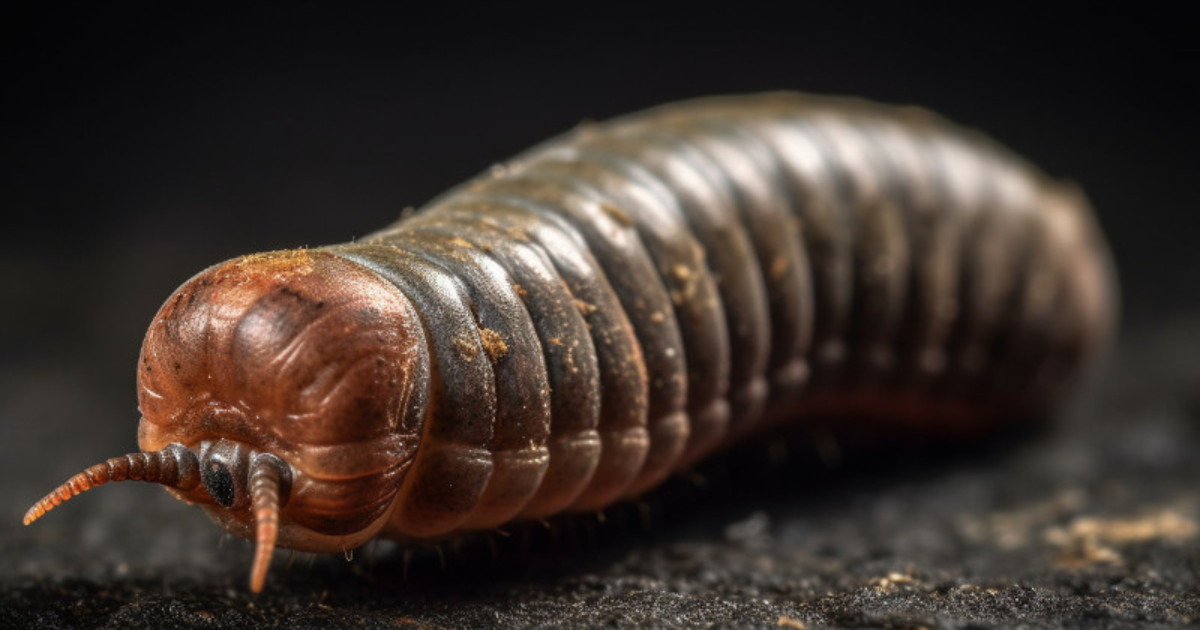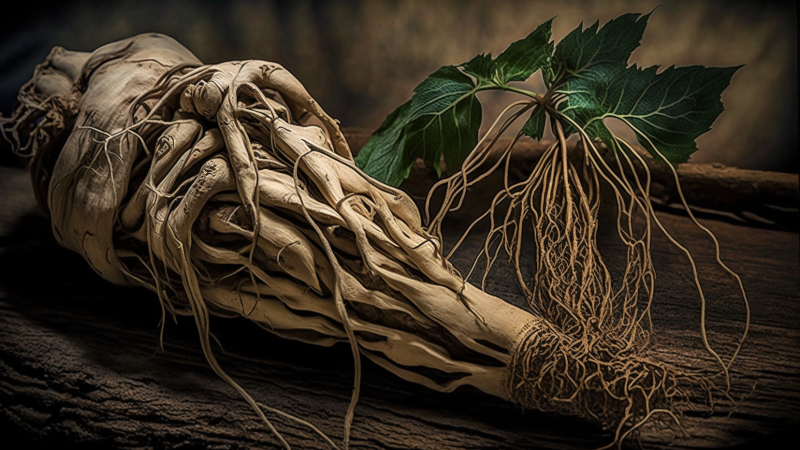Slippery Elm bark vs Marshmallow Root; these are two popular natural remedies that have been used for centuries to promote gut health and aid in parasite cleanses. Both of these herbs have been shown to have anti-inflammatory properties, which can help soothe irritation and inflammation in the digestive tract. They are also known for their ability to promote healthy digestion and support overall gut health.
Slippery Elm bark, which comes from the inner bark of the Slippery Elm tree, has been used for centuries by Native Americans to treat a variety of ailments, including digestive issues.
It contains a substance called mucilage, which is a type of fibre that becomes gel-like when mixed with water. This gel-like substance can help coat and soothe the digestive tract, making it a popular remedy for conditions such as heartburn, acid reflux, and Irritable Bowel Syndrome (IBS). 1
Marshmallow Root, also known as Althaea officinalis, is another herb that has been used for centuries to promote gut health.
Like Slippery Elm bark, it contains mucilage, which can help soothe and coat the digestive tract. It is also known for its ability to help support the immune system and aid in parasite cleanses. 2
Marshmallow Root has been shown to have anti-inflammatory properties, which can help reduce inflammation in the gut and promote overall gut health. 3
Table of Contents
Gut Health Benefits
Let’s take a quick look at some of the Slippery Elm bark vs Marshmallow Root benefits as standalone comparisons.
Slippery Elm Bark Benefits
- It has been used for centuries for its medicinal properties. As mentioned in the opening, it is rich in mucilage, a substance that becomes gel-like when mixed with water.
- This gel-like substance coats the digestive tract, providing a protective barrier against irritants and reducing inflammation.
- It can also help soothe the symptoms of various digestive disorders, including acid reflux, gastritis, and inflammatory bowel disease. 4
- It is also known for its prebiotic properties, which means it helps to feed the good bacteria in the gut. This can help improve gut health and support a healthy immune system.
Marshmallow Root Benefits
- This is another herb that has been used for centuries for its medicinal properties. Like Slippery Elm bark, Marshmallow Root is rich in mucilage, which can help soothe inflammation in the digestive tract.
- It may also help protect the gut lining and reduce the symptoms of various digestive disorders, including acid reflux, gastritis, and inflammatory bowel disease. 5
- It may also have prebiotic properties, which means it can help support the growth of beneficial bacteria in the gut. This can help improve gut health and support a healthy immune system.
- Additionally, this root may also help reduce the symptoms of constipation, making it a useful remedy for those with IBS. 6

Slippery Elm Bark vs Marshmallow Root for Parasite Cleanse
When we look at the application of Slippery Elm bark vs Marshmallow Root for parasite cleanses, certain aspects of using these herbs and your general health require consideration.
Slippery Elm Bark for Parasite Cleanse
This bark has been traditionally used for its medicinal properties, including its ability to help cleanse the body of parasites. 7
Along with mucilage, it also contains tannins, which have astringent properties that help to tighten and tone the tissues of the digestive tract. 8 9 10
It can be taken in capsule form or as a tea. It is important to note that the bark may interfere with the absorption of other medications, so it is important to consult with a healthcare provider before taking it.
Marshmallow Root for Parasite Cleanse
This root has also been traditionally used for its wide range of medicinal properties, including its ability to help cleanse the body of parasites.
Apart from mucilage it also contains flavonoids, which have anti-inflammatory and antioxidant properties.
It can also be taken in capsule form or as a tea. It is important to note that this root may also interfere with the absorption of other medications, so it is important to consult with a healthcare provider before taking it.

Overall, Slippery Elm bark vs Marshmallow Root options are both effective natural remedies for parasite cleansing. However, it is important to consult with a healthcare provider before taking any new supplements or herbs, especially if you are taking other medications or have a medical condition.
How to Use Slippery Elm Bark vs Marshmallow Root
Slippery Elm Bark Usage
This bark can be used in a variety of ways to promote gut health and cleanse parasites. Here are some common methods that specialists may advise:
- Mix 1 to 2 teaspoons of the powder with water to create a paste. Take 1 to 2 teaspoons of the paste before meals to soothe the digestive tract.
- Add the powder to smoothies or other drinks to promote gut health.
- Make tea by steeping 1 to 2 teaspoons of the dried bark in hot water for 5 to 10 minutes. Drink the tea 2 to 3 times per day to promote gut health.
Marshmallow Root Usage
Marshmallow root can be used in a variety of ways to promote gut health and cleanse parasites. Here are some common methods for how it is used:
- Add the root powder to smoothies or other drinks to promote gut health.
- Make tea by steeping 1 to 2 teaspoons of the dried root in hot water for 5 to 10 minutes. Drink the tea 2 to 3 times per day to promote gut health.
- Take marshmallow root supplements in capsule form, following the recommended dosage on the label.
It is important to note that regardless of the choice you make in the Slippery Elm bark vs Marshmallow Root, they can both interact with certain medications. Before attempting to apply any approach with either of these herbs, consult with a healthcare provider, particularly if you are taking any medications.
Precautions
While both Slippery Elm bark and Marshmallow Root have been used for centuries for their medicinal properties, it is important to take precautions when using them.
Firstly, if you are pregnant or breastfeeding, it is recommended to avoid using these herbs as their safety in these situations has not been established.
Additionally, if you have any pre-existing medical conditions, it is important to consult with a healthcare professional as emphasised earlier.
It is also important to note that while we are considering Slippery Elm bark vs Marshmallow Root for their natural potential, even though they have been used for their anti-inflammatory properties, they should not be used as a replacement for medical treatment for any serious medical conditions.
Lastly, be sure to purchase these herbs from a reputable source to ensure their purity and efficacy. Always follow dosage instructions from your specialist carefully, and discontinue use if you experience any adverse side effects.
FAQs
Can you combine Slippery Elm and Marshmallow Root?
Yes, you can combine these two to create a synergistic blend that may further enhance gut health and support the digestive system.
When considering Slippery Elm bark vs Marshmallow Root, combining these two herbs leverages their mucilage content, which can help soothe and coat the digestive tract, reducing inflammation and irritation.
Which is better Slippery Elm or Marshmallow?
Determining which is better largely depends on your individual needs and preferences, as both herbs offer unique benefits for gut health and soothing the digestive system.
In the Slippery Elm bark vs Marshmallow Root comparison, it’s essential to consider the specific properties of each herb and how they may address your specific health concerns.
While Slippery Elm bark is known for its ability to alleviate digestive issues and support prebiotic properties, Marshmallow Root is recognised for its immune system support and potential to reduce constipation symptoms.
Which is better for Acid Reflux Marshmallow Root or Slippery Elm?
When considering Slippery Elm bark vs Marshmallow Root for acid reflux relief, both herbs are known to offer soothing properties that can alleviate the symptoms.
They both contain mucilage, which can coat the digestive tract and help protect it from irritation caused by stomach acid. The choice between the two herbs may come down to personal preference and individual response.
Are there any Slippery Elm Benefits for hair?
When discussing Slippery Elm bark vs Marshmallow Root, it is worth noting that both herbs offer potential benefits for hair care. Slippery Elm benefits for hair include its moisturising properties due to the mucilage content, which can help hydrate and detangle hair, making it more manageable.
Similarly, Marshmallow Root also contains mucilage and provides similar benefits for hair care. Incorporating slippery elm and marshmallow roots for hair into your routine may help improve overall hair health, enhance shine, and reduce frizz.
How do Slippery Elm and Marshmallow Root Help Acid Reflux?
In the context of Slippery Elm bark vs Marshmallow Root, both herbs are known to be beneficial for managing acid reflux. Slippery Elm and Marshmallow Root help acid reflux by providing a soothing and protective effect on the esophagus and stomach lining.
This is due to the presence of mucilage, a gel-like substance that forms when these herbs come into contact with water. The mucilage coats and protects the esophagus, reducing irritation caused by stomach acid, and in turn, providing relief from acid reflux symptoms. Using these for acid reflux can be an effective and natural way to alleviate discomfort.
Can you mix Slippery Elm and Marshmallow Root together?
When considering Slippery Elm bark vs Marshmallow Root, it is indeed possible to mix Slippery Elm and Marshmallow Root. Combining these two herbs can enhance their benefits, providing a synergistic effect that may promote gut health, soothe inflammation, and support the digestive system. By mixing slippery elm and marshmallow root, you can potentially maximise the benefits these herbs offer.
Does Marshmallow Root heal leaky gut?
In the Slippery Elm bark vs Marshmallow Root discussion, marshmallow root has been traditionally used to support gut health and is believed to help with conditions like leaky gut. While there is anecdotal evidence on platforms such as Reddit, claiming that marshmallow root can help heal leaky gut, scientific research on this specific topic is limited.
Marshmallow root does contain mucilage, which coats and soothes the digestive tract, and has anti-inflammatory properties that can help alleviate inflammation in the gut lining. These factors may contribute to the healing process of a leaky gut.
Conclusion
Regardless of which you choose in the Slippery Elm bark vs Marshmallow Root discussion, they are both great options for improving gut health and helping with parasite cleansing.
While they share some similarities, they also have some differences that may make one more suitable for your specific needs than the other. Ultimately, the best choice depends on your situation and preferences.
It’s important to note that while these herbs have been traditionally used for centuries, there is still limited scientific research on their effectiveness. As with any supplement or herb, it’s always best to consult with a healthcare professional before adding them to your regimen.
What are your thoughts on the Slippery Elm bark vs Marshmallow Root discussion? Share your experiences with us on Instagram and Pinterest.
References
- “Effects of two natural medicine formulations on irritable bowel syndrome symptoms: a pilot study” – J. A. Hawrelak, S. P. Myers, October 2010 [PubMed] [Archive] ↩︎
- “Parasites, nutrition, immune responses, and biology of metabolic tissues” – T. Shea-Donohue, B. Qin, A. Smith., 22 March 2017 [PubMed] [Archive] ↩︎
- “Therapeutic effects of marshmallow (Althaea officinalis L.) extract on plasma biochemical parameters of common carp infected with Aeromonas hydrophila” – M. Banaee, V. Soleimany, B. Nematdoost Haghi, 15 June 2017 [PubMed] [Archive] ↩︎
- “Can You Use Slippery Elm to Treat Acid Reflux?” – D. Weatherspoon, N. Silver, 20 August 2018 [Healthline] [Archive] ↩︎
- “Gastro-Protective and Anti-Oxidant Potential of Althaea officinalis and Solanum nigrum on Pyloric Ligation/Indomethacin-Induced Ulceration in Rats” – S. S. Zaghlool, A. A. Abo-Seif, M. A. Rabeh, U. R. Abdelmohsen, B. A. S. Messiha, 25 October 2019 [PubMed] [Archive] ↩︎
- “Aqueous extracts and polysaccharides from Marshmallow roots (Althea officinalis L.): Cellular internalisation and stimulation of cell physiology of human epithelial cells in vitro” – A. Deters, J. Zippel, N. Hellenbrand, D. Pappai, C. Possemeyer, A. Hensel, 8 January 2010 [ScienceDirect] [Archive] ↩︎
- “Slippery Elm” – Drugs.com Stafff, Last Checked 15 April 2023 [Drugs] [Archive] ↩︎
- “Slippery Elm, its Biochemistry, and use as a Complementary and Alternative Treatment for Laryngeal Irritation” – C. R. Watts, B. Rousseau, January 2012 [ReserachGate] [Archive] ↩︎
- “Slippery Elm” – MSKCC Staff, Last Updated 30 June 2022 [MSKCC] [Archive] ↩︎
- “Herbal Medicines: A Guide for Health-Care Professionals – Second Edition” – J. Barnes, L. A. Anderson, J. D. Phillipson, 10 October 2002 [ACS Publications] [Archive] ↩︎
Last Updated on 6 months by D&C Editorial Team


